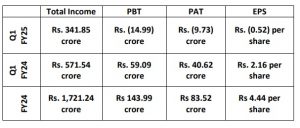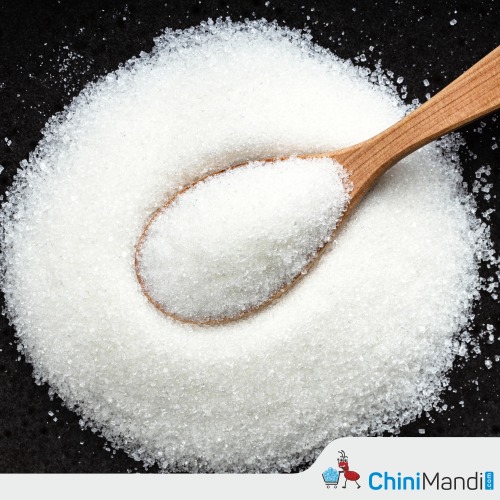Dwarikesh Sugar Industries Ltd., today announced its unaudited financial results for the quarter ended June 30, 2024.
In Q1 FY25, the company reported loss before tax (LBT) of Rs. 14.99 crore and loss after tax (LAT) of Rs. 9.73 crore as compared to PBT of Rs. 59.09 crore and PAT of Rs. 40.62 crore reported during Q1 FY24.

The latest projections from the Indian Sugar & Bio-energy Manufacturers Association indicate that sugar production for the 2023-24 season is set to reach 32 million tons, factoring in a diversion of 1.7 million tons towards ethanol production. According to the recent estimates from the Indian Sugar & Bio-energy Manufacturers Association (ISMA), the gross sugar production for the sugar season 2024-25 is projected to reach 33.3 million tons. However, much depends on the remainder of the monsoon season. More accurate forecasts are expected in the coming months, as the intensity and distribution of rainfall during the monsoon will play a crucial role in determining crop yields and overall production levels.
According to the, Vijay S. Banka, Managing Director, Dwarikesh Sugar Industries Ltd, although there is potential for the resumption of the ethanol blending program, policy regarding possible allowances for sugar exports will perhaps be crafted once more clearer sugar production estimates are available. Sugar prices, which were range bound between Rs. 3,800 and Rs. 3,900 per quintal, suffered a dent in July 2024 due to extensive rainfall across the country. However, sugar prices have once again surged towards the end of July 2024.
The financial results for Q1 FY25 were impacted by the cessation of crushing activities during the quarter. This halt resulted in the un-absorption of overhead costs, which typically spreads over operational periods when crushing and production are active.
Additionally, the restrictions imposed by the government on the use of cane juice and B heavy molasses for ethanol production further made the situation more challenging. These measures curtailed the production and availability of ethanol for sale.












